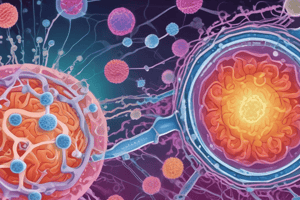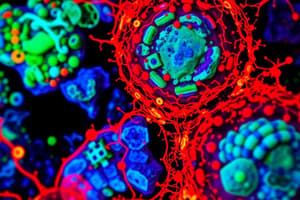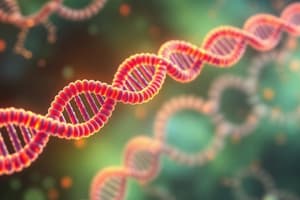Podcast
Questions and Answers
Architectures of Skeletal Muscles
Architectures of Skeletal Muscles
Circular Parallel Convergent Pennate Unipennate Bipennate Multipennate A pennate is the point of attachment of muscles to tendon Refer to Table 11.3
Create a sphincter; control material passage through an opening
Create a sphincter; control material passage through an opening
Parallel muscles: fascicles run parallel to muscle’s long axis Sometimes have an expanded central belly; high endurance Convergent muscles: fascicles merge toward a common attachment site Can pull in varying directions, but not as hard as parallel muscles 6
Major action and identify 5 Part of a Skeletal Muscle
Major action and identify 5 Part of a Skeletal Muscle
Origin Attachment to stationary end of muscle Belly Thicker, middle region of muscle Insertion Belly Attachment to mobile end of muscle Origin, insertion, and belly of biceps brachii muscle
Criteria for Naming Skeletal Muscles
Criteria for Naming Skeletal Muscles
Architecture of Skeletal Muscles
Architecture of Skeletal Muscles
Flashcards
Skeletal Muscle Architecture
Skeletal Muscle Architecture
The varied arrangement of fascicles (bundles of muscle fibers) in skeletal muscles.
Parallel Muscles
Parallel Muscles
Muscle fascicles run parallel to the muscle's long axis. They often have a central belly and are good for endurance.
Convergent Muscles
Convergent Muscles
Muscle fascicles merge toward a common attachment site. They can pull in various directions but not as strongly as parallel muscles.
Pennate Muscles
Pennate Muscles
Signup and view all the flashcards
Muscle Naming Criteria
Muscle Naming Criteria
Signup and view all the flashcards
Study Notes
Lab 9: Axial Muscles
- This lab is part of BIOL21300 A&P-I Lab 9 and covers Chapter 12 (Ch12)
- Recommended exercises to complete in Ch12 include Exercise 12.1, Exercise 12.2, Exercise 12.5, Exercise 12.8, and Exercise 12.9
Learning Objectives
- Identify parts of a skeletal muscle
- Identify origin and insertion of muscles (indicated by a symbol)
- Understand how muscles are named
- Classify muscles functionally
- Describe major actions and identify representative muscles in:
- The skull
- The shoulder and chest
- The back
Studying That Suits You
Use AI to generate personalized quizzes and flashcards to suit your learning preferences.



